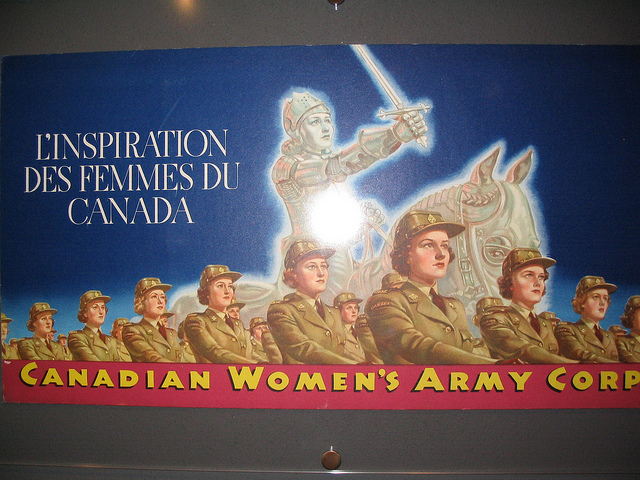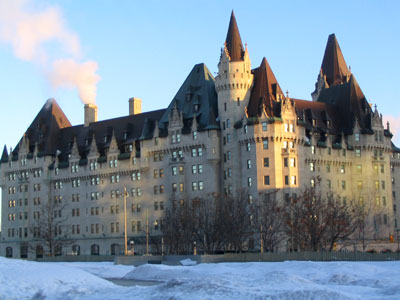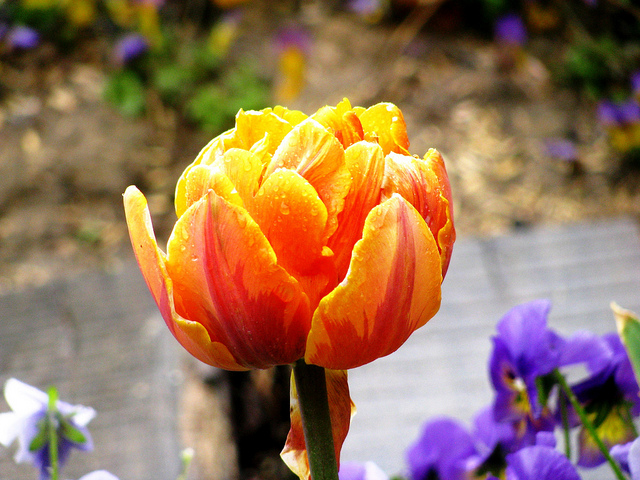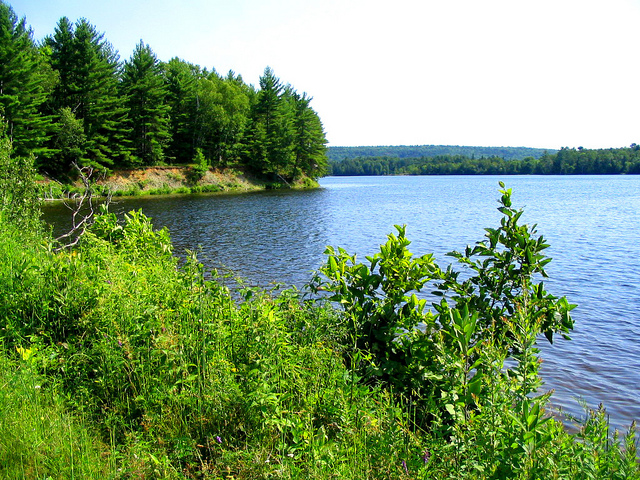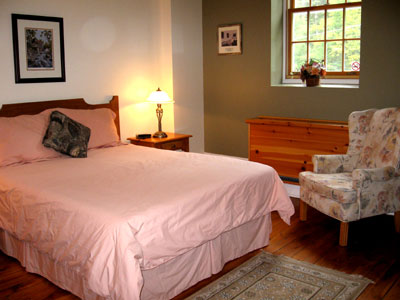Anybody who knows me and my personal family background knows that I absolutely abhor violence and war. War and conflict has existed all throughout human history and it has often baffled me that even in this day and age, in our supposedly advanced civilizations, we still haven’t found more peaceful ways of coexisting.
My trip to Ottawa this past weekend has been very exciting, entertaining and enjoyable, yet I felt the impulse to add a more serious stop to my itinerary and I decided to explore the new Canadian War Museum and it’s special exhibition: “Propaganda: Weapons of Mass Dissemination”.
The new Canadian War Museum opened in May of 2005 in a brand-new building on the banks of the Ottawa River, about 7 minutes west of downtown Ottawa by taxi or bus. Its mandate is to “Educate. Preserve. Remember” and the Museum focuses strictly on Canada’s role in various armed conflicts throughout history.

The new museum building is an interesting story in itself. Designed by Raymond Moriyama of Moriyama & Teshima Architects, the innovative design of the Museum is based on the theme of “regeneration”, which not only alludes to the impact of war on the land, but also Nature’s ability to regenerate itself and recover from the devastation of human conflict.
In tune with natural regeneration, energy-efficient construction techniques and recycled materials were used in the construction of the building. The roof is covered by low-maintenance native, self-seeding grasses, and river water is used in its cooling system. Recycled copper panels from the roof of the Library of Parliament were used as cladding in parts of the interior of the building.
The building is an unusual structure, low-lying with jagged edges and angular, trapezoidal lines. When you enter inside there is a large central hall that connects both the south and north entrance. The building has a raw, fragmentary and unfinished quality to it, and the materials used include galvanized steel, concrete, wood, hard surfaces and strong, deep colour. It is not a comfortable, harmonic place, and it is not intended to be.
An immense seven-meter high audio visual presentation of the Museum’s content provides a glimpse of what is to come inside the main exhibition areas. Several features of the building deserve to be highlighted:
– the Museum features Morse Code windows in both English and French, reading “Lest We Forget” on the north peak, and other windows spell out the Museum’s initials “CWM”.
– Every November 11, at 11 am, and only on this day and at this hour, the sun shines through the window of the Museum’s Memorial Hall and illuminates the only artifact in this space: the headstone of Canada’s Unknown Soldier.

The window illuminating the headstone of Canada’s Unknown Soldier
The Museum is very large and its total collection has about 500,000 artifacts. The total artifacts on display in the Canadian Experience Galleries is 2,167 and there are 135 featured audiovisual productions. 2,000 graphic images reside inside the Museum.
The layout of the Museum is complex and interwoven, creating a rich, multi-sensory, multi-media visitor experience. It houses 4 Permanent Exhibitions:
Gallery 1. Battleground
This exhibition explores warfare from pre-contact Canada to the Battle of Batoche in 1885. This section looks at the technology and equipment of early First Peoples. A major highlight in this section is the Battle of the Plains of Abraham of 1759 where New France was conquered and Quebec became a part of Canada. Amazingly this battle only lasted half an hour, 30 minutes that changed Canada.

Early aboriginal warfare
Another section in this area illustrates the War of 1812, when Canada was attacked by the United States and government buildings in the City of York (now Toronto) were burnt down by the Americans. In retaliation British Canadian militia marched all the way to Washington and burned the American’s official buildings which had to be whitewashed, therefore the term “White House”.
Different outcomes of two consecutive rebellions in 1870 and 1885 in Manitoba and Saskatchewan illustrate the key difference of new technologies: while the first rebellion was successful, the second uprising was quelled easily due to the introduction of the railroads, which allowed for rapid troop deployment, better training of the government troops and the introduction of the telegraph which allowed for rapid communication. Other technological innovations of this era included the Gatling gun which was capable of 800 shots a minute, the first automatic weapon.

Gatlin Gun
Gallery 2. For Crown and Country
This gallery explores Canada’s military involvements overseas. It looks at the South African War (also known as the Boer War, from 1899 to 1902), and the Second World War from 1914 to 1918.
A significant technological development during the South African War include rifles that could fire accurately at a distance of up to 800 m. British soldiers, who had earlier been wearing red tunics, had to switch to camouflage uniforms due to the increased reach of modern weapons. The time of traditional British formation battles was over.
Canada’s land forces were among the most effective during World War I and an important section is dedicated to the critical battle of Vimy Ridge. My tour guide Eric mentioned that the First World War was initially a very popular war and that after the declaration of war in July of 1914, Canadian soldiers even expected to be home by Christmas. 1 of 8 Canadian men joined the war and interestingly, conjugal consent was required to enlist for married men.
Support for the war dwindled as time went on and as people learned about the devastating effects of trench warfare which are illustrated effectively in the Museum. An interesting social side note is that in order to enact conscription, i.e. mandatory military service, the Canadian government extended a limited voting right to women in 1917, but only to women whose sons and husbands were fighting in the First World War. These women would logically vote in favour of the existing government as they wanted to send support to their husbands and sons fighting in the war. General voting rights were not extended to all women until 1919.
A powerful exhibit includes an outright scene of devastation that shows a recreated landscape after a devastating battle where all surrounding structures have been destroyed and soldiers are lying dead face-down in the mud of the battlefield.

Utter devastation
